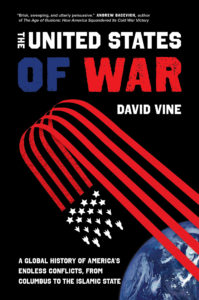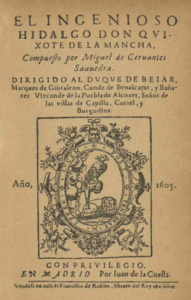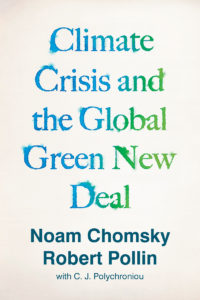The US Chose Endless War Over Pandemic Preparedness. Now We See The Effects

The United States of War – A Global History of America’s Endless Conflicts, from Columbus to the Islamic State. ISBN: 9780520300873
The United States has the longest record of war-fighting in modern history. Why that is the case is not a question that has an easy answer; suffice to say, however, that militarism and violence run like a red thread throughout U.S. political history, with enormous costs both for the domestic economy and the world at large, as a recently published book by David Vine makes plainly clear. In fact, the militarist mentality is strongly reinforced by the Trump administration in spite of the fact that the current president claims to have an aversion to “endless wars.” In this exclusive Truthout interview, Vine, a professor of anthropology at American University in Washington, D.C., addresses critical questions about U.S. war culture and Trump’s own contribution to the violence that has always been foundational to U.S. culture.
C.J. Polychroniou: Your latest book, The United States of War: A Global History of America’s Endless Conflicts, from Columbus to the Islamic State, is a detailed survey of the U.S.’s obsession with militarism and war. Have you come to a definite conclusion or explanation as to why the United States has been at war for about 225 of the 243 years since its independence?
David Vine: There is, of course, no simple answer to this incredibly important question. According to my research, the U.S. military has been at war or engaged in other combat in all but 11 years of U.S. history — 95 percent of the years the United States has existed. My book shows how the huge collection of U.S. military bases abroad provides a key — or a kind of lens — to help understand why the United States has been fighting almost without pause since 1776. Bases abroad, bases beyond U.S. borders show how U.S. political, economic and military leaders — shaped by the forces of history, capitalism, racism, patriarchy, nationalism and religion — have used taxpayer money to build a self-perpetuating system of permanent, imperialist war revolving around an often-expanding collection of extraterritorial military bases. These bases have expanded the boundaries of the United States, while keeping the country locked in a state of nearly continuous war that has largely served the economic and political interests of elites and left tens of millions dead, wounded and displaced.
To be clear, my argument is not that U.S. bases abroad are the singular cause of this near-endless fighting. Indeed, my book shows how the answer to why the U.S. government has fought so constantly lies in the capitalist profit-making desires of businesses and elites, in the electoral interests of politicians, and in the forces of racism, militarized masculinity, nationalism and missionary Christianity, among other dynamics.
U.S. bases abroad, however, have played a key and long overlooked role in the pattern of near-constant U.S. fighting: that is, since independence, bases that U.S. leaders have built beyond the borders of the United States not only have enabled wars but also have made offensive imperialist wars more likely. While U.S. leaders often portray bases abroad as defensive in nature, the opposite is generally the case: bases built on the territory of other peoples have tended to be offensive in nature, providing a launchpad for yet more wars. This has tended to create a pattern in which bases abroad have led to wars that have led to the construction of new bases abroad that have led to new wars that have led to new bases and so on.
Can you offer us a quick assessment of the overall costs of the “global war on terror?”
It’s impossible to capture the immensity of the catastrophe that the so-called “global war on terror” has inflicted. Around 15,000 U.S. military personnel and contractors have died in wars the U.S. government has waged since invading Afghanistan in October 2001. Hundreds of thousands of troops have returned with amputations, post-traumatic stress disorder (PTSD), traumatic brain injuries, and other physical and mental damage. As of 2018, 1.7 million veterans had reported a wartime disability.
Across the countries where the U.S. military has fought, the death toll is at least 50 times higher than the U.S. death toll: In Afghanistan, Iraq, Syria, Pakistan and Yemen alone, an estimated 755,000 to 786,000 civilians and combatants have died as a result of combat. Total deaths may reach 3.1-4 million or more, including those who have died as a result of disease, hunger and malnutrition caused by the wars. Entire neighborhoods, cities and societies have been shattered by these wars. The number injured and traumatized surely extends into the tens of millions. At least 37 million people have been displaced from their homes during U.S. fighting in Afghanistan, Iraq, Libya, Pakistan, the Philippines, Somalia, Syria and Yemen. For perspective, 37 million is about as many people as live in California and in Texas and Virginia combined. Thirty seven million displaced is more than those displaced by any war anywhere in the world since at least 1900, with the exception of World War II.
The U.S. government and the United States as a country are not single-handedly responsible for all the death, displacement and destruction of these wars. Other governments and combatants also bear significant responsibility. However, the U.S. government bears disproportionate responsibility, especially for the wars it has launched (Afghanistan, the overlapping war in Pakistan, and Iraq), the wars it has escalated (Libya and Syria), and the wars in which U.S. forces have been significant combatants (Yemen, Somalia and the Philippines). Alongside U.S. funding for and involvement in combat in a total of at least 24 countries since 2001, the rhetoric of the “war on terror” alone has also fueled wars and violence worldwide.
Alongside the human damage, the financial costs of the so-called war on terror are so large, they’re nearly incomprehensible. As of October 2020, the U.S. government has spent or obligated a minimum of $6.4 trillion on the post-2001 wars, including the costs of future veterans’ benefits and interest payments on the money borrowed to pay for the wars. The actual costs are likely to run hundreds of billions or trillions more, depending on when we force our politicians to bring these seemingly endless wars to an end.
While it’s incredibly hard to fathom $6.4 trillion in taxpayer funds vanished, the catastrophe is compounded when we consider how else the U.S. government could have spent such incredible sums of money. What could these trillions have done to provide universal health care, to rebuild public schools, to build affordable housing, to end homelessness and hunger, to rebuild crumbling civilian infrastructure, to prepare for pandemics? In addition to the 3-4 million who have likely died in the wars the U.S. government has fought since 2001, how many more have died because of the investments the U.S. government did not make? These are questions that, I have to say, should make us weep.
In trying to wrap our minds around the unbelievable human and financial costs of the so-called “war on terror,” we also have to remember that this war has also been a catastrophic failure on its own terms: the main result of the “war on terror” has been to spread terror and dramatically expand the number of groups and people who would engage in terrorist attacks on U.S. citizens and others civilians worldwide as a political tool. In Afghanistan, for example, there are at least 10 times as many militant groups today as there were in 2001. Meanwhile, research has consistently shown that military action is rarely effective in shutting down militant “terrorist” groups. Responding to the attacks of 9/11 with what has now been an endless global war has been one of the most catastrophic and deadly mistakes in world history.
The United States is a violent society and is getting more violent, especially in the age of Trump. How is this connected to war culture and militarism?
In short, I would say the United States has always been a profoundly violent country, but that often this violence has been obscured or ignored, at least by some. In this way, just as Trump’s reign has exposed the racism, nativism and misogyny of the United States, Trump has also exposed the violence that has always been foundational — but not inevitable — to the United States.
A full, proper answer to this question would require a book of its own, but I would start by quoting the novelist William Faulkner’s words, “The past is never dead. It’s not even past.” Which is to say that the long history of wars waged by the United States — a history that actually dates to the arrival of Columbus in the Americas and to vicious religious wars waged by Europeans in Europe — has shaped the United States and daily life in the country in profound ways, including in the racist violence that we are seeing increasingly during Trump’s reign. A country’s military does not fight in nearly every year of the country’s existence in at least 135 foreign lands without this violence shaping the country profoundly.
To provide one illustration of the connections between the past and the present, it’s no coincidence that so many of the heavily armed, right-wing, white nationalist militant groups in the United States call themselves militias. These groups are invoking, and thus help to reveal, the connections between today’s violence and the role of organized militias in the imperialist expansion and genocidal colonization carried out by the 13 original U.S. states across North America.
That a growing number of right-wing groups and politicians are increasingly embracing the ideology of white supremacy in increasingly explicit ways is also a reminder of the foundational role of racist violence in U.S. history, from the violence of enslavement built into the U.S. Constitution, to the racist genocide inflicted on Native American peoples by the U.S. Army, state militias and Euro-American settlers, to the racism that has shaped the hundreds of U.S. wars and combat actions pursued beyond today’s U.S. borders against peoples who have overwhelmingly been people of color.
We can also see the connections between today’s violence and the history of U.S. wars in the massive number of guns and other firearms in the United States, in the longstanding glorification of war and violence in U.S. popular culture, and in the growing militarization of the police, among many other connections.
Trump’s political hypocrisy manifests itself on many fronts, and this includes criticizing generals and weapons manufacturers for the so-called “endless wars” and campaigning on a seemingly anti-war platform (witness the testaments to his aversion at the Republican National Convention) when he keeps increasing the military budget every consecutive year since he has been in office. In fact, he established a new branch of the military to oversee all space activities (Space Force) in opposition to the Pentagon’s top brass. What’s going on here? What’s Trump’s game over defense spending, which is literally out of control?
Trump’s “game” is ironically an encouraging sign. Trump’s criticism of generals, weapons manufacturers and the endless wars is indeed a campaign strategy built on his recognition that large majorities in the United States are now opposed to war — certainly to the kinds of large-scale invasions, occupations, and wars seen in Afghanistan and Iraq.
As you said, Trump is a complete hypocrite given the role he has played in continuing the endless wars and ploughing unprecedented sums of money into the military budget and the coffers of the weapons manufacturers. But his antiwar talk is a sign that much of the country has turned against war, that people across the political spectrum — from the left to anti-imperialist Republicans and libertarians — are demanding a different approach to foreign policy. Trump’s antiwar talk is a sign that the pursuit of peace and the avoidance of war at all costs is increasingly popular. It’s a sign that the pursuit of peace and the avoidance of war can be and should be the consensus among mainstream politicians of all stripes.
In your view, is there a connection between the amount of money the U.S. pours into its war machine and its inability to deal with the coronavirus pandemic? And to what extent are the military’s activities actually exacerbating the spread of COVID-19?
Clearly there is a deep connection between the war machine and the U.S. government’s failure to protect the country against COVID. Trump is responsible for the unnecessary deaths of at least tens of thousands of people, but the responsibility is shared by past presidential administrations and the entire war system. As others have pointed out, spending $6.4 trillion on the “war on terror” and trillions more on the annual military budget since 2001 has not protected us from COVID and other pandemics. Spending such immense sums on war has stolen money — and the time and energies of millions of Americans — from pandemic preparedness, from a properly robust public health infrastructure, and from the creation of a universal health care system that could have properly cared for the sick.
Beyond the post-2001 period alone, for decades U.S. leaders have built what is effectively a warfare state. While other wealthy nations have built social welfare states, U.S. politicians and elites have invested in a state dedicated above all to waging war and to preparations for waging war.
President Eisenhower was exactly right when he called this kind of diversion of funds a “theft.” He said, “Every gun that is made, every warship launched, every rocket fired signifies, in the final sense, a theft from those who hunger and are not fed, those who are cold and are not clothed.” Today, every gun that is made signifies a theft from those with COVID, from those who might contract COVID, from all of us.
The military’s daily activities are also exacerbating the spread of COVID in a variety of ways from spreading the disease among military personnel and endangering people living near U.S. military bases in places such as Okinawa, to continuing wars — in places such as Afghanistan, Syria and Yemen — that are destroying public health infrastructure, causing displacement and generally creating humanitarian disasters that are exacerbating the vulnerability of millions of people to coronavirus.
—
C.J. Polychroniou is a political economist/political scientist who has taught and worked in universities and research centers in Europe and the United States. His main research interests are in European economic integration, globalization, the political economy of the United States and the deconstruction of neoliberalism’s politico-economic project. He is a regular contributor to Truthout as well as a member of Truthout’s Public Intellectual Project. He has published several books and his articles have appeared in a variety of journals, magazines, newspapers and popular news websites. Many of his publications have been translated into several foreign languages, including Croatian, French, Greek, Italian, Portuguese, Spanish and Turkish. He is the author of Optimism Over Despair: Noam Chomsky On Capitalism, Empire, and Social Change, an anthology of interviews with Chomsky originally published at Truthoutand collected by Haymarket Books.









